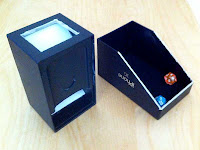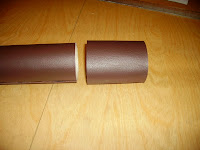Father's Day is on Sunday 21st June 2020 which is only 10 days away but there is still time to get that special something for your D&D Dad.
Here are 9 special gift ideas you can buy on Amazon.
Under £10A Dice Rolling Tray Frankly I think these are an essential accessory to keep your dice rolling under control. I have one of these and it folds flat for easy storage and carriage. The larger size is especially welcome when you are rolling a fistfull of those damage dice. | |
| A New Set of Dice It doesn't matter how many dice us D&D Dads have we can always do with some more. I particularly like the wild colours on this set which make it look like they are on fire with magical flames. Which is basically how I roll... | |
| A New Notebook Every Dungeon Dad needs a new notebook so he can fill it with campaign ideas or adventure journal entries. | |
£10 to £20A New T-Shirt What better way for your Dad to say it loud and proud with a classy new T-Shirt. I particularly like the Dragon's head artwork on this one and lets face it Dragons are always found at the heart of a Dungeon which is right where this gift will get your Dad. | |
| A New Pint Glass What better way for your Dad to celebrate a particularly fraught campaign but to toast to fallen heroes from the skulls of their enemy. Also a great icebreaker at BBQs. "Could you bring me a drink in the head of Alfredo Garcia darling?" | |
| An Area of Effect Template This is one of the best I've seen yet. Made of transparent acrylic with clear marked areas of effect for all the popular spells. With this your Dad can finally end the argument of exactly who is getting hit by his fireball. I particularly like the additional random direction feature on the outer ring because there are just those times when a spell bounces and you don't want it to come towards you. | |
Over £20A Big 3 Level Pirate Ship I was gobsmacked when I saw this. I have been running games for over 35 years and have never found anything quite as practical as this 3 level pirate ship. Made from laser cut plywood this is the perfect accessory for the Dungeon Dad who likes to make his players walk the plank. It also doubles as an impressive display stand for the man cave. I'm just hoping that my step daughter sees this page and buys me one... fingers crossed. | |
| Acrylic Condition Rings 72 Piece Set If your Dad is a dungeon master he has probably encountered this problem on many an occasion. How to track the various states that your PCs and Monsters can get themselves into during the course of a frenetic xombat. Look no further because this set of clear acrylic condition rings puts an end to all that. Colour coded for every one of 18 different combat conditions (4 rings of each type), these rings will help your dearest dad keep up with the upkeep of even the biggest skirmishes. | |
| A Dice Tower Sometimes your Dad needs all the help he can get and that means taking the human element out of rolling those pesky polyhedrons. This is one of the tallest towers on the market and will cast an impressive shadow on everyone around the table. It is made of cool blue transparent acrylic and is sure to mesmerise and randomise to equal effect. |
Priceless
What every dad really wants is to spend some quality time with their kids. So why not sit your dad down at the table and ask him to play a game. He'll have memories of that special father's day forever.
Help Support this Channel
Please consider supporting this channel by clicking on the affiliate links above. It won't cost you any more but a small percentage goes to help fund this blog. Thank You and Happy Father's Day.


























